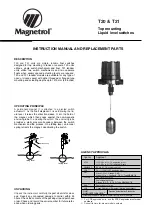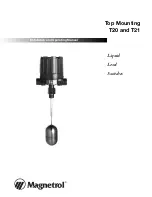
4
2. Installation
2.1. Installation procedure
1. The unit should be mounted by a qualified installer, holding relevant permits and licenses (applicable and required
for a given country) for 230V/AC interference and low-voltage installations.
2. The unit should be mounted in confined spaces, in accordance with the 2nd environmental class, with normal
relative humidity (RH=90% maximum, without condensation) and temperature from -
10°C to +45°C.
3. The switch shall work in a vertical position that guarantees sufficient convectional air-flow through ventilating
holes of the enclosure. The power supply load balance should be done before installation. During normal
operation, the total current drawn by the receivers cannot exceed I=1.2A. The device is designed for a continuous
operation and is not equipped with a power-switch. Therefore, an appropriate overload protection in the power
supply circuit should be provided. Moreover, the user should be informed how to disconnect the power supply unit
from the mains supply (usually by assigning an appropriate fuse in the fuse box). The electrical system shall be
made in accordance with applicable standards and regulations.
2.2. Installation procedure
1. Before installation, make sure that the voltage in the 230V power-supply circuit is cut off.
2. Mount the PSU in a selected location and connect the wires.
3. Connect the power cables (~230V) to the L-N terminals of the power supply.
4. Connect the ground wire to the terminal marked by the earth symbol PE
(power supply module connector). Use a
three-core cable (with a yellow and green PE protection wire) to make the connection. Lead the cables to the appropriate
terminals of the connection board through the insulating bushing.
5. Connect the power (~230V).
6. Connect the camera wires to the RJ45 connectors (PoE connectors).
7. Check the optical indication of the switch operation.
8. After installing and checking proper working, the enclosure can be closed.
Connection schemes.
























